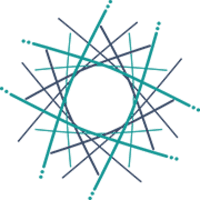AbstractWith the objective of discovering novel putative intervention sites for anticancer therapy, we compared transcriptional profiles of breast cancer, lung squamous cell cancer (LSCC), lung adenocarcinoma (LAC), and renal cell cancer (RCC). Each of these tumor types still needs improvement in medical treatment. Our intention was to search for genes not only highly expressed in the majority of patient samples but which also exhibit very low or even absence of expression in a comprehensive panel of 16 critical (vital) normal tissues. To achieve this goal, we combined two powerful technologies, PCR-based cDNA subtraction and cDNA microarrays. Seven subtractive libraries consisting of ∼9250 clones were established and enriched for tumor-specific transcripts. These clones, together with ∼1750 additional tumor-relevant genes, were used for cDNA microarray preparation. Hybridizations were performed using a pool of 16 critical normal tissues as a reference in all experiments. In total, we analyzed 20 samples of breast cancer, 11 of LSCC, 11 of LAC, and 8 of RCC. To select for genes with low or even no expression in normal tissues, expression profiles of 22 different normal tissues were additionally analyzed. Importantly, this tissue-wide expression profiling allowed us to eliminate genes, which exhibit also high expression in normal tissues. Similarly, expression signatures of genes, which are derived from infiltrating cells of the immune system, were eliminated as well. Cluster analysis resulted in the identification of 527 expressed sequence tags specifically up-regulated in these tumors. Gene-wise hierarchical clustering of these clones clearly separated the different tumor types with RCC exhibiting the most homogenous and LAC the most diverse expression profile. In addition to already known tumor-associated genes, the majority of identified genes have not yet been brought into context with tumorigenesis such as genes involved in bone matrix mineralization (OSN, OPN, and OSF-2) in lung, breast, and kidney cancer or genes controlling Ca2+ homeostasis (RCN1,CALCA, S100 protein family). EGLN3, which recently has been shown to be involved in regulation of hypoxia-inducible factor, was found to be highly up-regulated in all RCCs and in half of the LSCCs analyzed. Furthermore, 42 genes, the expression level of which correlated with the overall survival of breast cancer patients, were identified. The gene dendogram clearly separates two groups of genes, those up-regulated such as cyclin B1, TGF-β3, B-Myb, Erg2, VCAM-1, and CD44 and those down-regulated such as MIG-6, Esp15, and CAK in patients with short survival time.

